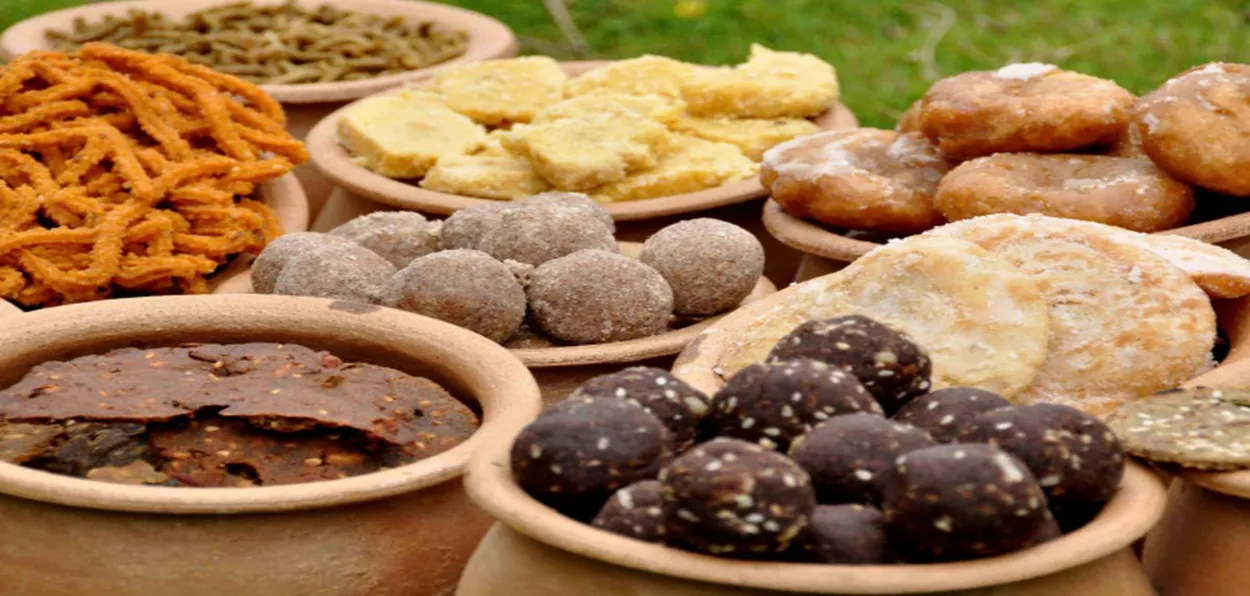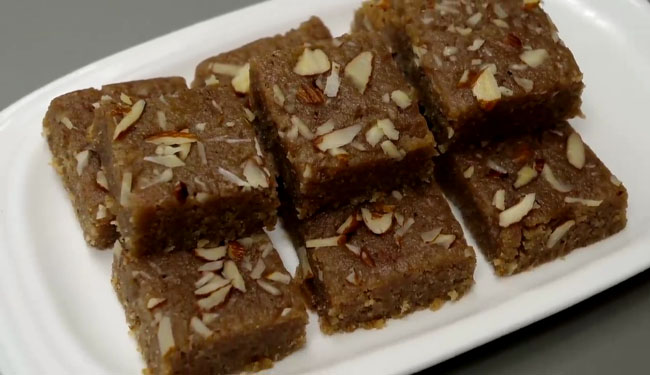
New Delhi
Navratri, the nine-day Hindu festival celebrating feminine divinity and the arrival of Goddess Durga among the mortals for these many days, is also associated with good and healthy food called sattvic food in naturopathy.
Though it is not compulsory, people voluntarily give up eating the usual rice-roti combo foods and go for coarse grains, the millets which, the world, has discovered as the new age super food.
The trend of eating millets during the Navratri is not because of the global rage for millets but an Indian tradition. It’s also a way of balancing nutrition within the human body and resting the gut from digesting hard and oily foods.
The tradition of eating pseudo grains or coarse grains differs from place to place and is linked to the availability of the food.
For example, in Kashmir, people eat singhara (water chestnut) flour which is available in plenty in the Valley’s water bodies.
.webp)
The Navratri thali
However, in rest of the India, there is an array of superfoods to choose from. The choice ranges from amaranth (rajgira or Cholai), buckwheat (kuttu ka atta), barnyard millet (sanwa), foxtail millet (rala), little millet (wari), ragi, etc.
All these are gluten-free high in nutrition, and especially packed with key vitamins These manage to keep the glucose levels in the body normal and also maintain the blood pressure.
Besides, those keeping fast can also eat fruits and milk.
Here are a few traditional recipes for Navratri:
Sabudana (Sago) Khichdi is the most commonly eaten food during the Navratri fast. It contains huge amounts of carbohydrates and starch, due to which our stomach remains full for a long time during fasting. Sabudana khichdi prepared with just a few spices is eaten with great relish during Navratri. Its carbohydrate content can be balanced by adding roasted and crushed peanuts and vegetables to it.
Dhokla can be prepared by using Sanwa rice Banyard millet looks like a smaller and broken rice. It is flavored with ghee, red chili, cumin, and curry leaves. As attractive as this Dhokla looks, it is equally tasty to eat.
.webp)
Sabudana Khichri (Courtesy: Food Trails)
Potato is a vegetable that can be eaten without much thinking during the Navratri fast. We can prepare and eat many types of dishes from potatoes. Fasting Dahi Aloo Sabzi is prepared by adding boiled potatoes to curd gravy.
You must try samosas made from water chestnut flour. These are as crunchy in appearance as they are spicy and tasty.
Kachori can be made using Sama rice flour. By eating kachoris made of Sama flour, the stomach remains full for a longer time.

Singhara ka atta ki barfi (Water chestnut flour fudge)
For those with a sweet tooth water chestnut flour barfi is an excellent option. Eating amaranth and jaggery laddus can not only keep bones strong but can also cure stomach problems.
ALSO READ: Jorasanko Thakurbari: Tagore's family inspired many innovations in Bengali cuisine
Those with a liking for tangy and spicy foods can prepare fruit chaat with an extra ingredient of dry fruits and chaat masala.
